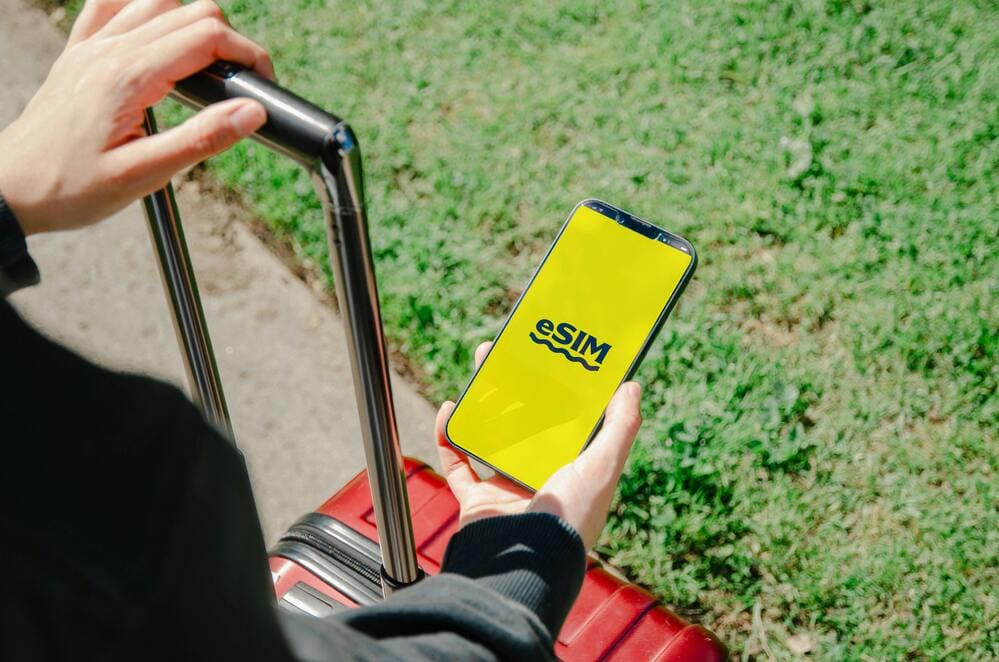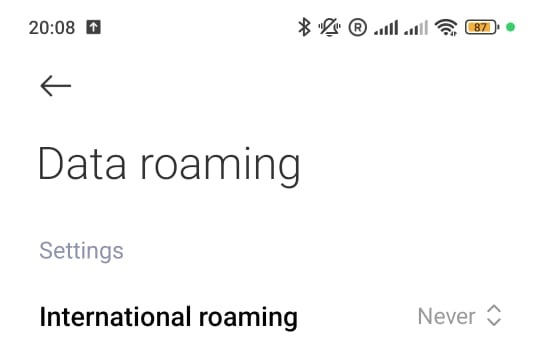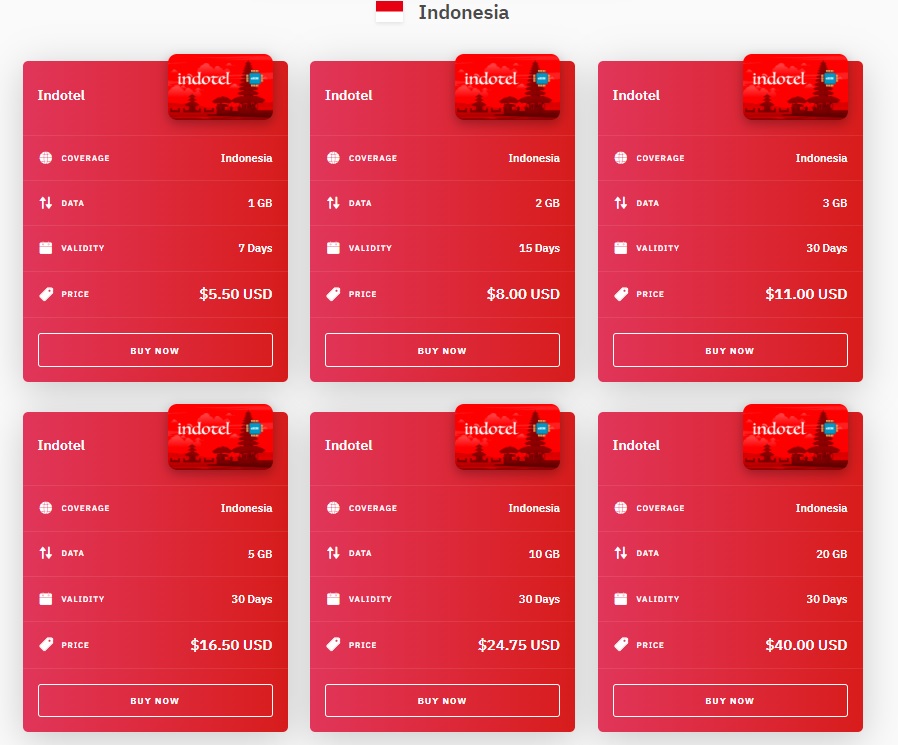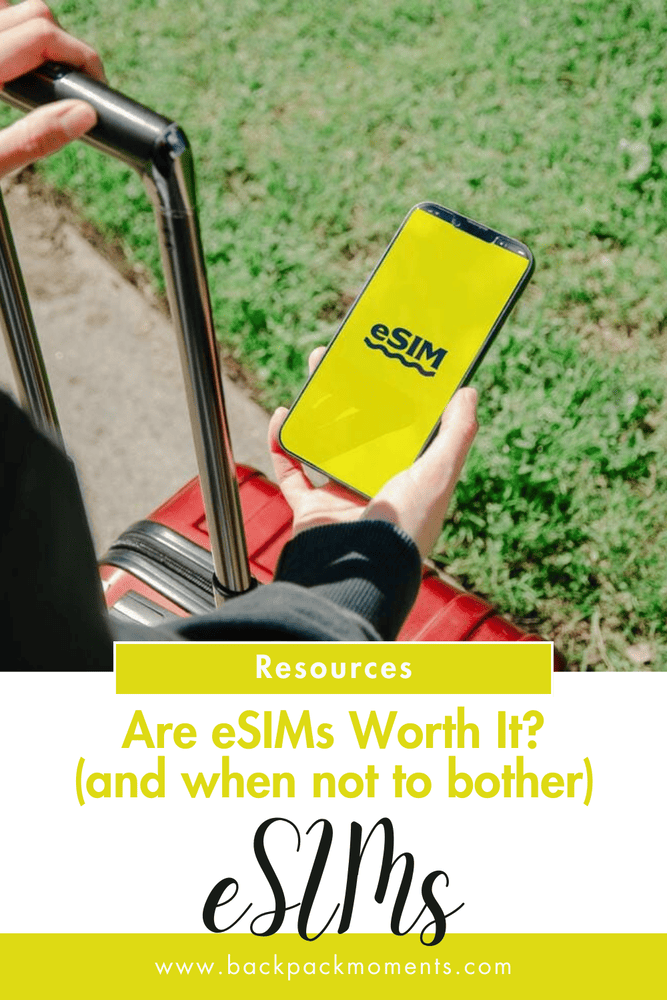Are eSIMs Worth It? (and when not to bother)
This post may contain affiliate links. If you make a purchase using one of these links, I may receive a small reward at no extra cost to you. See my Disclosure Policy for more information.
eSIMs have taken the world by storm, and more and more travelers are using one or considering buying one for their next adventure.
The “e” in eSIM stands for embedded (not electronic, as I initially thought) meaning it’s software in your smartphone – not a physical piece of plastic like conventional SIM cards.

Sounds super convenient, right? Yes, eSIMs are indeed very handy!
But are they worth the price? Maybe. It depends.
Let’s dive deeper into when an eSIM is a good deal and when you shouldn’t bother.
eSIMs Overview
An eSIM is a piece of software pre-installed on the chips of most modern smartphones. By buying and activating an eSIM plan, you get mobile internet for the chosen country on the go.
The industry is moving towards an eSIM standard for all smartphones but for now, check if your smartphone supports eSIMs.
| Pros | Cons |
|---|---|
| Cheaper than roaming. | Usually more expensive than local SIMs. |
| Super easy to set up and you don’t need to visit an office. | Low data limits on cheaper plans |
| Regional eSIMs offer connectivity for multiple countries. | Some smartphones don’t support it and smartphones produced in some countries have eligibility requirements. |
| You can use an eSIM and your home SIM card at the same time. You don’t need Dual SIM. | Cannot be transferred to a different phone if the first breaks. |
Convenience
The eSIM offers unprecedented convenience – no visits to foreign mobile network providers, no opening up your phone, no juggling of SIM cards. Just pay and play!
That’s its biggest benefit and why so many travelers nowadays opt for an eSIM.

You can buy an eSIM online within 2 minutes. You can buy it before you go abroad and it will activate automatically when you first connect to mobile data in the selected country. That’s when the plan’s duration will begin.
That means you will have internet the moment the plane touches ground!
Price
This practicality comes at a cost – eSIMs cost less than roaming (which is an expensive luxury) but more than local SIM cards.
Here are a few back-of-the-napkin comparisons for some countries:
- For Indonesia, an eSIM with 5 GB of data costs 16.50 USD. A local SIM card with 5 GB of data cost me 6 USD.
- For Vietnam, an eSIM with 10 GB of data costs 21 USD. I bought a local SIM with unlimited data for 7 USD.
- For Cambodia, an eSIM with 20 GB of data costs 32 USD. The equivalent amount of data on a local SIM costs only 8 USD.
- For Thailand, an unlimited data eSIM for 15 days costs 19.95 USD. I bought a local sim with 30 GB for 30 days for 8 USD.

As you can see, an eSIM costs 3 to 4 times the price of an ordinary local SIM. That holds true for more expensive countries as well.
Even if you buy a local SIM card at the airport on arrival – inarguably the most expensive place – you’d still pay at least double for an equivalent eSIM card.
I am yet to land at an airport that doesn’t sell SIM cards, so it’s just a matter of getting an employee to register and set it up on your phone (unless you’re one of those people who needs to check Facebook the moment the plane lands). Yes, this takes 10-30 minutes but I think that’s a good deal if it saves me 10 bucks.
For example, if you buy a local SIM card for Vietnam at the airport, you’ll pay 12-16 USD for a 30-day unlimited data package. This is a much better deal than the 21 USD for 10 GB of data on an eSIM.
When to buy an eSIM
Given that eSIMs are generally more expensive than local SIMs, what are the circumstances under which it is worth it to buy one?
- Your phone doesn’t have a second SIM card slot and you must keep your primary SIM active (for instance, for SMS verification codes).
- You’re visiting multiple countries and staying only a few days in each. In this case, regional eSIMs or global eSIMs will save you a lot of time, hassle, and probably even money!
- The country you’re visiting doesn’t allow foreigners to buy local SIM cards or makes the process troublesome. India is one such example.
- Your smartphone doesn’t have a SIM card slot. The latest iPhones already did away with physical slots. Android phones will follow soon.
- The local SIM plans are more expensive than an eSIM plan. This happens rarely but sometimes tourist plans include stuff you don’t need (SMS, calls, excessive amount of data) and jacked-up prices.
- No SIM cards are sold at the airport and you don’t have time to search for an office.
When NOT to buy an eSIM
eSIMs are not ubiquitous yet and there are valid reasons why you shouldn’t bother buying one or it’s not the right choice.
- Your smartphone is not compatible. Not all phones are. Check the list and how to find out if yours is.
- You’re staying in a country longer. Just get a local SIM – more data, longer plans, and cheaper prices.
- You’re budget-conscious. Local SIMs are usually cheaper than eSIMs.
- No eSIMs exist for the country you’re traveling to. It’s the usual suspects – Myanmar, Russia, Iran, Cuba, etc.
Can you use both an eSIM and a physical SIM at the same time?
Yes, you can! You can use an eSIM together with your ordinary physical SIM even if you don’t have 2 physical slots (Dual SIM) as long as your smartphone is eSIM compatible.
This way you’d be able to receive OTP verification codes to your home SIM but use the eSIM for mobile data to avoid roaming charges.
Do eSIMs support personal hotspots?
Yes! Even with an eSIM, you can share your connection with others nearby so 2 or more devices can use the internet.

That’s a smart way to save money when traveling as a couple – buy a single SIM card (either physical or eSIM) and use tethering (i.e. share a hotspot) to have internet on both devices.
Popular eSIM providers
Some of the biggest eSIM providers on the market are:
- Airalo (World’s first eSIM store. The prices quoted in the article are based on their packages)
- Yesim
- Holafly
Increasingly more eSIM providers are appearing and you may be overwhelmed by choice. I’ve found that the prices are very similar on all providers and it’s not worth the hassle of browsing around, trying to find a better price.

So, are eSIMs worth it?
I, for one, will continue to buy a local SIM card when I arrive in a new country as long as it’s cheaper and not too difficult to find an office and set up.
However, I recognize that eSIMs are remarkably convenient and solve many of the problems with conventional SIMs.
So eSIMs may very well be worth it for you!



Beware buying certain day-limited eSIMS too far in advance from your home country as they sometimes can start their validity from the moment you install them, rather than when they first connect to the appropriate network abroad
Good point. I think most start when you first use them but if not, it will be an unpleasant surprise.